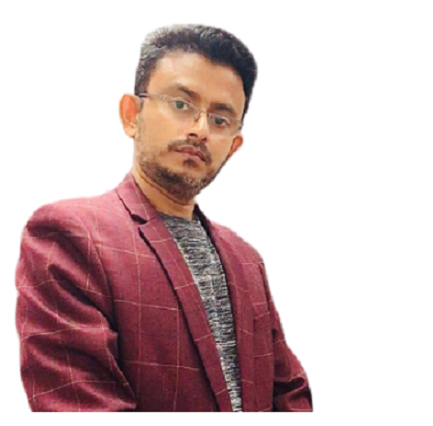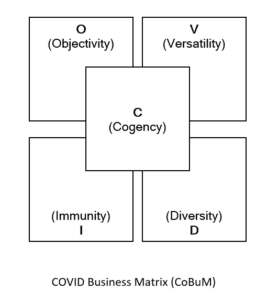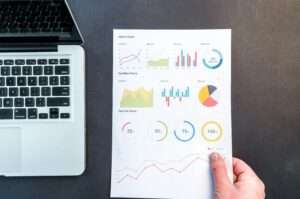
In the serenity of doing business, nobody expected a surprise that would shake this world without any sign. It was March 11, 2020, when the World Health Organization declared COVID-19 a pandemic. Far from the eye and far beyond the distance, and that’s what people thought when the coronavirus started its activities in Wuhan city of mainland China. It does not reach the human mind that the advent of the corona will not only be a threat to health but will also change the way of life and ruin the business empire that has been built for so long.

By Dr Shathees Baskaran, an Associate Professor at Azman Hashim International Business School, Universiti Teknologi Malaysia. He is an experienced strategic management professional whose major area of interest is strategic management where his intellectual contributions can be found. For more information, visit https://business.utm.my/shathees_intro/
Human ignorance of the power of the corona not only shocked the whole world but also proved to all organizations the weakness of the business model that has existed for so long. Hence, “business as usual” has become a thing of the past, thanks to the coronavirus. This proves that in this unpredictable age, there is no such thing as “normal”. Many companies have begun their recovery process as the effects of COVID-19 continue to be felt. However, the pandemic which is continuing to peak with adverse effects on the organizational efforts made the business landscape to be much different than it was in the past. To emerge stronger is the only way for organizations to reinvent themselves as they step into the post-pandemic business environment.
However, in light of the continuing pandemic uncertainty surrounding the organizations, assumptions historically used to formulate strategic options in setting their strategic path are now being called into question. Altering those presumptions, re-evaluating all circumstances, and progressing their capacity to predict and respond in an opportune way are all part of this process now. Organizations that are capable of navigating uncertainty will be better prepared with the ability to survive through high resilience regardless of any upcoming changes.
Despite the current state of the organizations, the author opined that organizations must first determine the scope of their goal of immediate recovery and how it connects to their entire strategy for long-term sustainability. This will enable the management of the organization to reshape its efforts and fix attainable targets that can be communicated across the organization to create the alignment across functions for recovery as well as the creation of objectivity, versatility, immunity, and diversity in the future business strategies for the business to remain cogent. Grounded on this idea, this article attempts to introduce a Covid Business Matrix (CoBuM) that will show the pillars that can create this resilience.
 Cogency (C)
Cogency (C)
An organization is well-positioned to manage its contingencies when it is cogent, a quality of being clear, logical, and convincing with lucidity. Cogency refers to the ability of organizations to support their decisions with sufficient (logical) evidence to defend themselves against challenges coming from the environment within which they operate. This requires that extensive references are made to provide a valid ground for efficient decision-making. This suggests that four dimensions can be considered for cogent decision-making in organizations to ensure their long-term sustainability: objectivity, versatility, immunity, and diversity.
Objectivity is concerned with the ability to maintain a realistic perspective while minimizing personal prejudices. It involves logical reasoning on how a decisive judgment regarding a state of affairs is being made objectively with adequate information from internal and external environments. Hence, evidence for decision-making must be clear, relevant, reasonable, and non-contradictory in their application of predicates, or they must adequately support the premises from a logical point of view to be considered logical. This also involves predictions and projections of diverse business scenarios through formal logic of deductive and inductive reasoning and the resulting strategic moves to cope with the contingencies. It is essential to note that links between premises and conclusions are very objective and provide a more informed strategic direction for the organization.
An ability to adapt or be adapted to many different business environment possibilities explains the second dimension of organizational cogency which is versatility. To be considered versatile, cogent decisions should incorporate versatility across the organizations that promote critical decision-making. A versatile organization is tuned to respond to challenges and is well prepared to rebuttal these challenges quickly without the coercion of force or time pressure. The versatility dimension, therefore, idealizes various business conditions and provides an opportunity for organizations to be ready at all times for changing market dynamics.
 Immunity, the third dimension within organizational cogency concerned with the strength of “organizational antibodies” in anticipating and addressing shocks as they come. The strength of the “antibody” depends on the degree of objectivity and also versatility in making decisive judgments while catering to the versatile needs of a continuously changing business environment. In other words, cogency in the organizations is achieved not only through formal inductive and deductive (logical) reasoning but also through immunity of the organizations represented in the strength of the decisions asserting that competence to understand a business environment from a present and future state allows one making the judgment to be in a position to cast such a judgment.
Immunity, the third dimension within organizational cogency concerned with the strength of “organizational antibodies” in anticipating and addressing shocks as they come. The strength of the “antibody” depends on the degree of objectivity and also versatility in making decisive judgments while catering to the versatile needs of a continuously changing business environment. In other words, cogency in the organizations is achieved not only through formal inductive and deductive (logical) reasoning but also through immunity of the organizations represented in the strength of the decisions asserting that competence to understand a business environment from a present and future state allows one making the judgment to be in a position to cast such a judgment.
The final dimension is diversity which is associated with the degree of dissimilarity within the organization that stands out as a strength for long-term sustainability. This dimension focuses on how the organizations are strategizing the diversity in the organization for the best benefits of its long-term growth. Although a greater degree of diversity can be very challenging, the ability of the organizations to capitalize on it by understanding its uniqueness defines their long-term plan for performance as well as sustainability. The diversity dimension, therefore, acts as a means to scrutinize the conception and execution of a sustainable business strategy by creating the strategic fit between diversity and organizational strategies. A premise can therefore evoke that diversity conditions need to be considered as essential to not undermine the cogency of the decision-making in the organizations.
This initial discussion suggests that all of these dimensions are very important for organizations. These dimensions are highly interrelated and need to be seen holistically by the organization while making decisions as there are many more upheavals that the organization will face in the future.
Objectivity (O)
The capacity to preserve a realistic viewpoint and minimize personal biases is referred to as objectivity. Organizations that follow objectivity rely on factual information in making scenario-specific decisions. Various biases from the organizational citizens such as previous experiences, and personal interests may influence objectivity. However, a choice that is made objectively is not impacted by personal sentiments, viewpoints, interests, or prejudices. Rather, it takes into account only verifiable facts as well as the interests of all parties.
 Objective descriptions are an important part of a competent decision-making process in decision science. Most crucially and realistically, objective description necessitates the employment of appropriate instruments and competence, as well as the appropriate resources. In this situation, judgment replaces, or more accurately, complements, objective description. Therefore, objectivity ensures adherence to the values of the organization with the ultimate aim of maximizing benefits and minimizing loss. In cases where there are conflicts or competing priorities, the organization must find an acceptable solution. Regardless of viewpoint, objectivity in decision-making must be based purely on facts, data, and analysis that can be independently verified with a variety of perspectives agreed upon by rational and informed people.
Objective descriptions are an important part of a competent decision-making process in decision science. Most crucially and realistically, objective description necessitates the employment of appropriate instruments and competence, as well as the appropriate resources. In this situation, judgment replaces, or more accurately, complements, objective description. Therefore, objectivity ensures adherence to the values of the organization with the ultimate aim of maximizing benefits and minimizing loss. In cases where there are conflicts or competing priorities, the organization must find an acceptable solution. Regardless of viewpoint, objectivity in decision-making must be based purely on facts, data, and analysis that can be independently verified with a variety of perspectives agreed upon by rational and informed people.
Versatility (V)
Recent debates on organizational performance have stressed increasing complexity and a faster rate of change, and have called for new business models to deal with the paradoxes and difficulties that these factors create. On the surface, reacting to an unknown economic shock may be seen as overly confident and all-knowing by the citizens of the organizations. However, little do we acknowledge that business is just like gambling. In reality, all organizations are cautious, unsure, and puzzled, particularly when it comes to making quick judgments. So, how do the organizations keep their businesses sustainable? Their capacity to recognize and fix issues quickly is the key.
Addressing and overcoming business models which are inflexible as well as unresponsive to change is now becoming a major focus area in the organizations. In this vein, organizations are striving to create dynamic and versatile organizational settings. However, the question is what is it that makes an organization stand out as a dynamic and versatile organization? When the operational environment changes, organizations should be able to swiftly reorganize their resources to successfully offer products or services that satisfy market needs by reacting to market dynamics. This requires realignment of the versatile leadership and operational process exemplified through different business models developed for various products and services offered by the organization in meeting the diversified needs and wants of diverse customers from multiple market segments. This is one of the most important messages presented by the current catastrophe faced by organizations across the globe.
Immunity (I)
There are lessons to be learned from the health crisis for today’s businesses in terms of building the immunities they’ll need to be protected from future disruptive catastrophes. This is because only immune organizations are well-positioned to withstand disruptions of any magnitude. In order to develop an immunity that can withstand future shocks, organizations are required to think far and beyond their existing boundaries so that they can overcome future disruptions. This immunity can be developed through various mechanisms including versatile business models supported by flexible organizational designs and enhancement and investments in technology.
 It is undeniable that “full immunity” may not be achieved by organizations. However, when the organizations are made to face the next major disruption, it may help the organizations get back on their feet much faster although it may not avoid a total commercial interruption. Bindra (2020) in Hindustan Times recommended several “antibodies” that an organization can develop. Firstly, organizations should opt for decentralization of work. This is because disruptions are managed well when the work structure is decentralized. Secondly, the transformation of the business model that fits the needs of the digital world. It may not be possible for all organizations to transform into digitalized business models. However, restructuring the organization to be versatile requires a minimum level of digitalization. Organizations with conventional business models are no longer capable of coping with fast-changing market dynamics. Thirdly, it is recommended to develop a partnership ecosystem that complements their business models acknowledging resource scarcity is an unavoidable challenge in pursuing transformation. Fourthly, the organization’s focus needed to be shifted towards automation opportunities and possibilities. This move not only increases productivity but also helps in cost optimization in the long run. A company’s immune system can be strengthened by immunizing itself against automation. Fifthly, organizations must quickly reimagine customer journeys. The Covid-19 cataclysmic event has made a tremendous change to consumer behaviours, their lifestyle, and the future of the consumer market. For any firm, this means adjusting their business for this new customer experience and future-proofing themselves. Finally, immunity can be developed only with changes in mindsets and organizational cultural transformation. It is necessary to produce the most powerful “antibody” of mindset and cultural transformation before developing any of the others. So much simpler to construct the others once they’ve been developed and internalized, resulting in high levels of organizational immunity.
It is undeniable that “full immunity” may not be achieved by organizations. However, when the organizations are made to face the next major disruption, it may help the organizations get back on their feet much faster although it may not avoid a total commercial interruption. Bindra (2020) in Hindustan Times recommended several “antibodies” that an organization can develop. Firstly, organizations should opt for decentralization of work. This is because disruptions are managed well when the work structure is decentralized. Secondly, the transformation of the business model that fits the needs of the digital world. It may not be possible for all organizations to transform into digitalized business models. However, restructuring the organization to be versatile requires a minimum level of digitalization. Organizations with conventional business models are no longer capable of coping with fast-changing market dynamics. Thirdly, it is recommended to develop a partnership ecosystem that complements their business models acknowledging resource scarcity is an unavoidable challenge in pursuing transformation. Fourthly, the organization’s focus needed to be shifted towards automation opportunities and possibilities. This move not only increases productivity but also helps in cost optimization in the long run. A company’s immune system can be strengthened by immunizing itself against automation. Fifthly, organizations must quickly reimagine customer journeys. The Covid-19 cataclysmic event has made a tremendous change to consumer behaviours, their lifestyle, and the future of the consumer market. For any firm, this means adjusting their business for this new customer experience and future-proofing themselves. Finally, immunity can be developed only with changes in mindsets and organizational cultural transformation. It is necessary to produce the most powerful “antibody” of mindset and cultural transformation before developing any of the others. So much simpler to construct the others once they’ve been developed and internalized, resulting in high levels of organizational immunity.
Diversity (D)
Diversity is one of an organization’s greatest assets. In today’s extremely competitive global marketplace, diversity is essential to success although there are claims that diversity is a topic that corporate executives talk about, they do not practice it. Hence, it’s apparent that diversity needs a facelift. Organizations need a business model that completely embraces diversity as a growth catalyst for businesses. The benefits of diversity in business are numerous, including the availability of talent, the enhancement of interpersonal creativity, the avoidance of risk, and the attractiveness to a worldwide consumer base.
 More importantly, organizational diversity allows one to better serve the varied clientele. Because diversity may lead to better decision-making, better problem-solving, and higher creativity and invention – all of which can lead to superior product creation as well as more effective marketing to diverse sorts of clients – the commercial case for diversity is driven by this belief. Incorporating diversity into the organization increases innovation and creativity, as well as the company’s adaptability and fast decision-making. Besides, through a broader and more complete perspective, diversity fosters distinctive thinking and better decision-making.
More importantly, organizational diversity allows one to better serve the varied clientele. Because diversity may lead to better decision-making, better problem-solving, and higher creativity and invention – all of which can lead to superior product creation as well as more effective marketing to diverse sorts of clients – the commercial case for diversity is driven by this belief. Incorporating diversity into the organization increases innovation and creativity, as well as the company’s adaptability and fast decision-making. Besides, through a broader and more complete perspective, diversity fosters distinctive thinking and better decision-making.
To seize opportunities and avoid external dangers, an organization needs to be nimble by capitalizing the diversity. This is based on a basic premise. Innovative thinking encourages organizations to think outside of the box, employing a variety of viewpoints to come up with fresh and distinctive findings, which is inherent in the process of staying sustainable despite a fast-changing environment. However, mismanagement poses a threat to diversity in the organization, despite its obvious benefits. Despite the drawbacks, when it comes to global business success, an organization’s ability to effectively manage diversity will decide whether you succeed or fail in the long term.
Conclusion
In conclusion, the COVID-19 pandemic has sparked a shift in how organizations should approach their business model in the future as they cope with day-to-day operations. This issue has prompted organizations to change the way they operate, manage their workforce, and respond to consumer and employee needs. We can anticipate that the business world will appear very different post-COVID-19 although the outlook for full recovery still looks gloomy. The discussion is grounded in both relevant literature and the practical experiences of the author. This is just an early descriptive contribution. However, this contribution is envisaged to help organizations to position themselves and establish a realistic recovery path while working on CoBuM to ensure their long-term sustainability considering that uneven recovery ensues and similar future anomalies are unavoidable.
